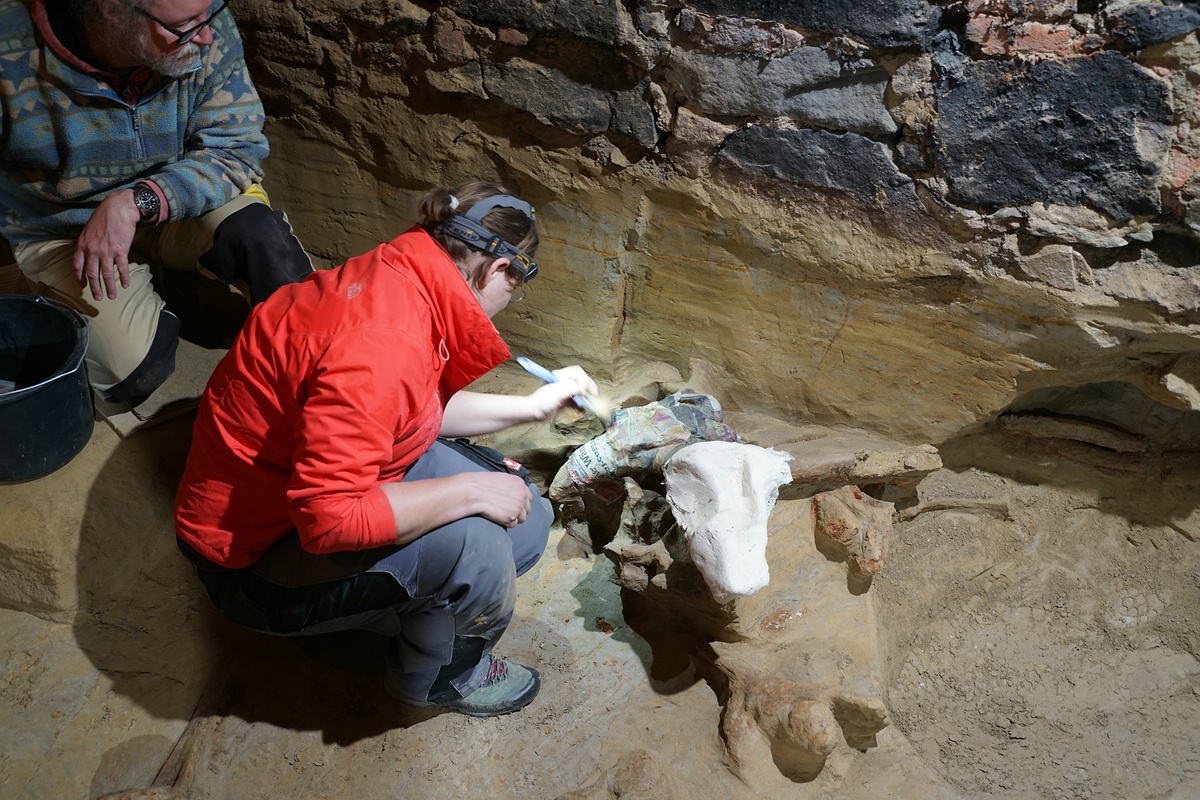The remains of three Stone Age mammoths have been uncovered within a wine cellar in Austria, providing incredible new insights into how ancient humans may have hunted the extinct beasts. Describing the find as the most significant of its kind in over a century, researchers have said that the bones are probably 30,000 to 40,000 years old.
The discovery was made by Andreas Pernerstorfer while renovating his wine cellar in Gobelsburg, which lies to the northwest of the capital, Vienna. After coming across what he initially thought was a piece of wood, Pernerstorfer then remembered his grandfather telling him that teeth had once been found at the site, leading him to suspect that the item may have been of prehistoric age.
Researchers from the Austrian Academy of Sciences (ÖAW) were then called to the site in mid-May, and have since uncovered the skeletons of at least three separate mammoths.
“Such a dense bone layer of mammoths is rare,” said excavation leader Hannah Parow-Souchon in a statement. “It’s the first time we’ve been able to investigate something like this in Austria using modern methods.”
The bones are due to be restored at the National History Museum in Vienna.
Image credit: Yannik Merkl
Indeed, it has been at least 100 years since anything comparable to this find has been unearthed in Austria or its neighboring countries, and the bones from those digs “are largely lost to modern research.” However, Gobelsburg does have form when it comes to Stone Age relics, as flint artifacts, jewelry, and charcoal were discovered in the cellar next to Pernerstorfer’s some 150 years ago.
The researchers were able to date these items to around 30,000 to 40,000 years ago, and believe the wine cellar mammoths probably belong to the same ancient assemblage.
Despite disappearing from the face of the Earth thousands of years ago, mammoths – the extinct relatives of modern elephants – continue to shape our understanding of how prehistoric humans lived. Evidence of butchered mammoth bones in Europe and the Americas, for instance, indicate that our ancient grandparents hunted and ate these colossal creatures.
“We know that humans hunted mammoths, but we still know very little about how they did it,” says Parow-Souchon. The researchers speculate that the enormous animals may have been killed on the spot after being chased there by hunters who had laid a trap for them, and it is hoped that more details about this ancient massacre will become clear as excavations continue.
The other big unanswered question, of course, is which bottle of plonk these early Austrians paired with their mammoth steaks.
Source Link: Man Finds Three Mammoth Skeletons In His Wine Cellar
